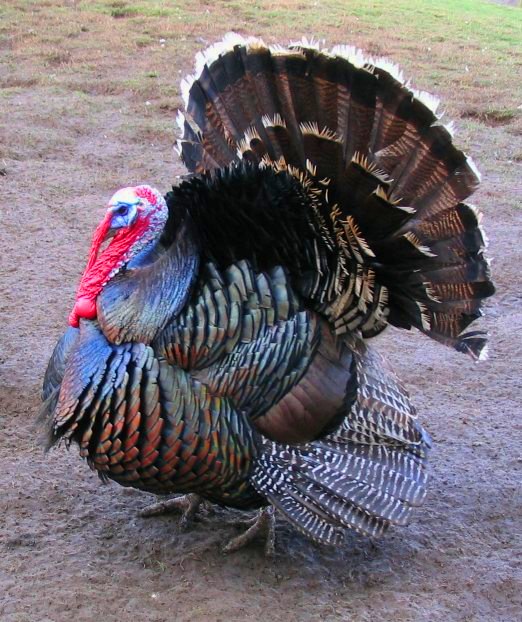Wild turkeys are magnificent birds, especially a courting male that struts about in a pompous manner with a fanlike tail display and expressive gobbling.Our Symbol of Thanksgiving
A Texas nature writer reflects on the wild turkey’s welcome comeback in the Lone Star State
By Ro Wauer
The turkey, that huge, ungainly bird of the oak woodlands and barnyards, has become a common symbol of Thanksgiving. No "Turkey Day" would be complete without it.
We are told that turkey is one of the most nutritious and healthy foods; we are encouraged to eat it year-round. For me, however, except for that marvelous smell from the oven, freshly cooked turkey is rarely as appealing as it is two or more days later. I like it best when I can pick the remaining meat from the bones or eat it in a sandwich or in enchiladas.
The vast majority of the frozen turkeys we purchase at the grocery stores are mass-produced and are a far cry from the critters that occur in the wild. Harry Oberholser, in The Bird Life of Texas, provides a marvelous comparison: "A wild gobbler has an alert eye in a slender blue head, a streamline body covered with highly burnished feathers, and long legs; the domestic bird has a dull eye sunk into a swollen red head, a flabby body clothed in dirty feathers, and dumpy legs. The former bird runs better than a race horse through the woods and flies as lightly as a ruffed grouse; the latter can scarily walk about its pen, much less fly." Wild turkeys can be separated from feral turkeys by the tuftlike beard hanging from the wild male (occasionally female) bird's chest.
Wild turkeys in Canada, found in the Kootenays, British ColumbiaWild turkeys are magnificent birds, especially a courting male that struts about in a pompous manner with a fanlike tail display and expressive gobbling. The polygamous gobbler maintains a sizable harem, fending off rival males. The hen hides her nest with great care and protects it and a dozen or so eggs against predators and other invaders. Incubation takes about twenty-eight days, but the poults are so precocial that the hen and young leave the nest immediately after the last egg has hatched. Within three weeks, they are able to fly well enough to perch overnight in trees. By fall, when acorns are ripe, several families may congregate into huge feeding flocks.
The Native Americans had already domesticated wild turkeys by the time the first Europeans reached North America, and it was one of the very few animal imports to the Old World. The abundant wild turkeys of the New World (estimated at 10 million) became all important to the settlers. They were so important, in fact, that when our "national bird" was chosen, the turkey was second only to the bald eagle. Benjamin Franklin defended the turkey as his choice because it was "more respectable" than the "thieving, scavenging bald eagle."
As Europeans moved westward, wild turkeys were plentiful throughout the eastern half of the continent, but by the late 1800s, only remnants of the original populations remained. So, today, the Texas turkey population is largely a product of reintroductions from other localities. But because of its adaptable nature, it has become commonplace again in our fields and woods. No other creature is so representative of our natural world, as we prepare to give thanks for our many blessings, as our wild turkey.
Founder/Publisher/Editor: David McGee
Contributing Editors: Billy Altman, Laura Fissinger, Christopher Hill, Derk Richardson
Logo Design: John Mendelsohn (www.johnmendelsohn.com)
Website Design: Kieran McGee (www.kieranmcgee.com)
Staff Photographers: Audrey Harrod (Louisville, KY; www.flickr.com/audreyharrod), Alicia Zappier (New York)
E-mail: thebluegrassspecial@gmail.com
Mailing Address: David McGee, 201 W. 85 St.—5B, New York, NY 10024



